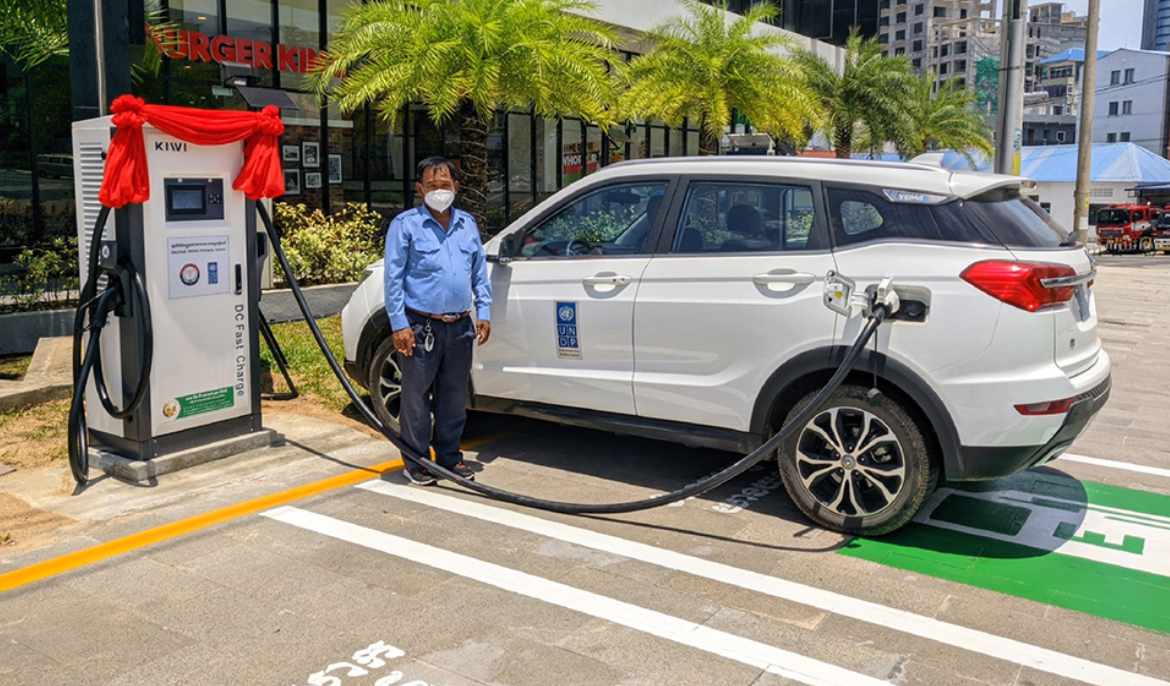The rise of electric vehicles (EVs) is transforming the global automotive industry, driving an unprecedented demand for high-performance semiconductors. As ASEAN positions itself as a regional hub for EV production and battery manufacturing, it faces a strategic opportunity: integrating its expanding semiconductor capacity with the EV value chain to establish the region as a cornerstone of the global green mobility revolution.
Semiconductors are the “brains” of EVs. From battery management systems to power electronics, autonomous driving features and infotainment platforms, EVs are increasingly reliant on advanced chips. Power devices regulate energy usage, while sensors, microcontrollers and signal processors manage torque, navigation and other vehicle functions. As EVs become more sophisticated, their dependence on semiconductors grows – and ASEAN is well placed to respond.
According to ERIA (2025), the global semiconductor market is expected to reach $1 trillion by 2030. ASEAN’s share is projected to rise from $31.3 billion in 2023 to US$52.9 billion by 2032. Malaysia, Vietnam and the Philippines already hold a competitive advantage in assembly, testing and packaging (ATP) – especially for EV-relevant applications such as power semiconductors and sensor integration. These capabilities form the foundation for a fully integrated EV-semiconductor ecosystem.
Moreover, the region is rich in critical minerals vital to both EV batteries and semiconductor manufacturing. Indonesia holds more than 40% of global nickel reserves, Viet Nam has 20% of the world’s rare earths, and the Philippines and Malaysia are significant sources of cobalt and tin. These materials are essential for lithium-ion batteries and high-performance semiconductor elements such as silicon, gallium and germanium.
Indonesia’s downstream industrial policy – exemplified by its nickel export ban – demonstrates how strategic resource management can catalyse domestic value chains. Facilities such as PT Infineon in Batam, producing over 450 million semiconductor units annually, illustrate how resource-rich countries can build a foundation for advanced technology manufacturing.
Simultaneously, ASEAN’s EV ambitions are accelerating. The International Energy Agency’s Global EV Outlook 2025 reports that Thailand remained ASEAN’s largest EV market in 2024, with EVs accounting for 13% of total vehicle sales. Indonesia and Vietnam also saw rapid growth, with EV sales tripling and nearly doubling respectively – reaching market shares on par with countries like Spain and Canada. Thailand, already a regional leader in EV assembly, has attracted significant investment from Japanese and Chinese automakers. However, the country remains dependent on chip imports.
Vietnam is emerging as a dual hub for EV and semiconductor production, backed by major investments from Intel, Amkor and local EV manufacturer VinFast. Malaysia’s Penang, meanwhile, is evolving into a design and R&D hub supporting both consumer electronics and the automotive sector.
ASEAN’s strategic strength lies in its complementarity: Indonesia supplies raw materials, Malaysia leads in chip testing and packaging, Vietnam and Thailand offer large-scale EV assembly. By fostering cross-border collaboration, ASEAN can transform from a group of individual national hubs into a cohesive, innovation-driven value chain.
To realise this vision, three strategic shifts are essential:
⦁ Strengthen upstream capabilities in design and fabrication.
Singapore already hosts global foundries and design houses, offering a model for replication. Encouraging semiconductor fabrication in Malaysia or Vietnam could establish regional EV-grade chip production.
⦁ Scale up mineral refining and recycling.
While ASEAN holds vast reserves, its refining capacity is still underdeveloped. Investment in sustainable mineral processing, high-purity silicon production and battery recycling is crucial to building a resilient upstream supply chain.
⦁ Establish integrated innovation zones.
Special Economic Zones (SEZs) in countries like Cambodia and Laos could become co-located hubs for semiconductor manufacturing, battery production and EV assembly. This vertical integration would streamline production, shorten lead times and enhance regional supply chain resilience.
Nevertheless, several challenges persist. Talent shortages – especially in engineering and digital skills – could constrain growth. Infrastructure gaps remain in parts of the region, and fragmented policy environments hinder scalability. Regional harmonisation, through mechanisms like the ASEAN Framework for Integrated Semiconductor Supply Chain (AFISS) and aligned EV strategies, is essential to unlock synergies.
Geopolitical dynamics present both risk and opportunity. As global firms adopt “China Plus One” strategies to diversify supply chains, ASEAN stands to benefit – but only if it can offer a stable, transparent and investment-friendly regulatory environment.
In conclusion, ASEAN stands at a pivotal moment. The convergence of its mineral wealth, semiconductor strengths and EV ambitions presents a rare opportunity to become a linchpin in the global clean mobility transition. With the right investments, collaborative policies and regional coordination, Southeast Asia can become both the battery and the brain of the future electric vehicle – propelling regional prosperity and advancing global sustainability.
Han Phoumin is a Senior Energy Economist and Alloysius Joko Purwanto is an Energy Economist, at the Economic Research Institute for ASEAN and East Asia (ERIA). The views and opinions expressed are their own.



